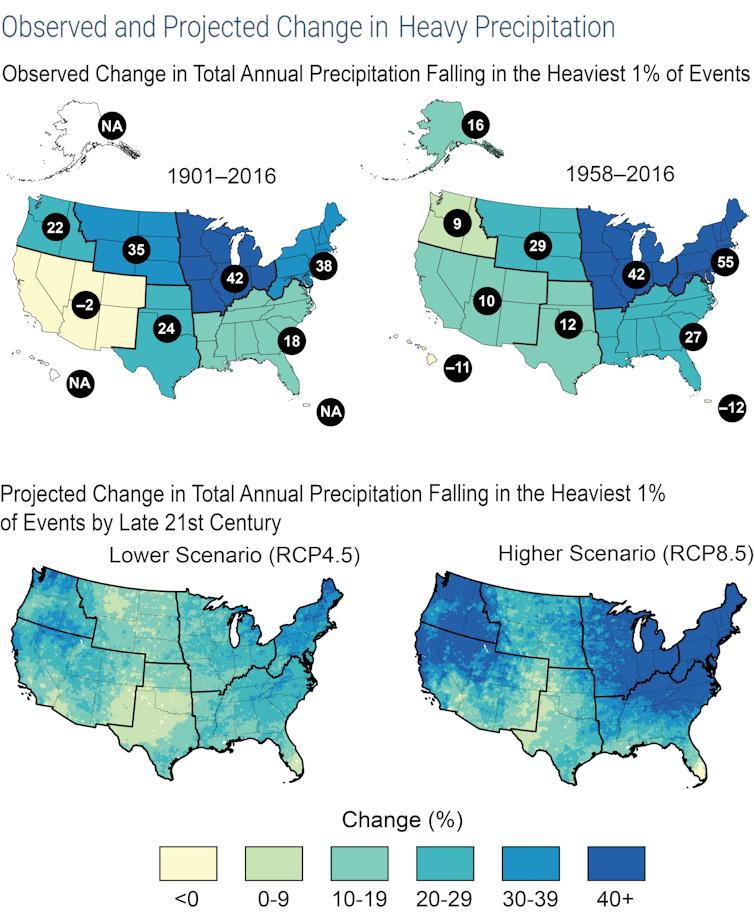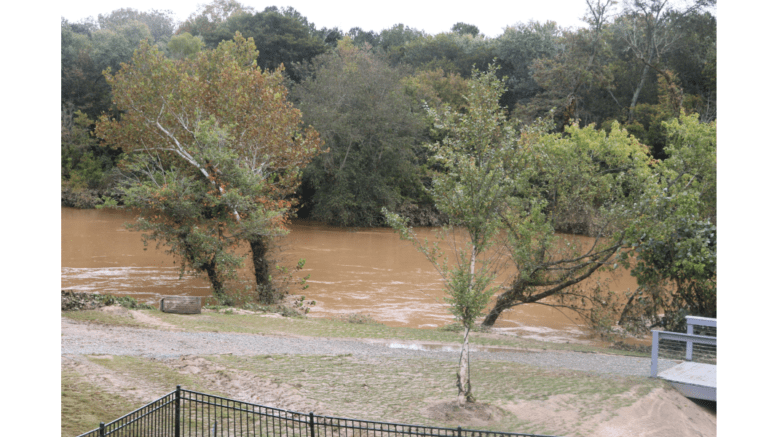By Richard B. (Ricky) Rood, University of Michigan [This article first appeared in The Conversation, republished with permission]
Powerful storms across the South, following flash floods in Dallas, Death Valley, St. Louis, Yellowstone and Appalachia, have left cities across the U.S. questioning their own security in a warming climate.
Dallas was hit with nearly 15 inches of rain that turned roads into rivers and poured into homes starting Aug. 21, 2022. Neighborhoods around Jackson, Mississippi, were inundated a few days later. In late July, extreme storms struck the mountains of eastern Kentucky, sending rivers sweeping through valley towns and triggering mudslides that killed more than three dozen people.
Floods are complex events, and they are about more than just heavy rain. Each community has its own unique geography and climate that can exacerbate flooding, so preparing to deal with future floods has to be tailored to the community.
I work with a center at the University of Michigan that helps communities turn climate knowledge into projects that can reduce the harm of future climate disasters. The recent floods provide case studies that can help cities everywhere manage the increasing risk.
Flood risks are rising
The first thing the recent floods tell us is that the climate is changing.
In the past, it might have made sense to consider a flood a rare and random event – communities could just build back. But the statistical distribution of weather events and natural disasters is shifting.
What might have been a 1-in-500-year event may become a 1-in-100-year event, on the way to becoming a 1-in-50-year event. Hurricane Harvey in 2017 delivered Houston’s third 500-year flood in the span of three years. Ellicott City, Maryland saw catastrophic floods in 2016 and 2018, and the town flooded again in June 2022.
Basic physics points to the rising risks ahead: Global greenhouse gas emissions are increasing global average temperatures. Warming leads to increasing precipitation and more intense downpours, and this increases flood potential.
Communities aren’t prepared
Recent floods are revealing vulnerabilities in how communities are designed and managed.
Pavement is a major contributor to urban flooding, because water cannot be absorbed and it runs off quickly. Similarly, after a forest fire or extended drought, water runs off of soil rather than soaking in. This can overwhelm drainage systems and pile up debris that can clog pipes and culverts.
Failures in maintaining infrastructure, such as levees and storm drains, are a common contributor to flooding.
If the infrastructure is well designed and maintained, flood damage can be greatly reduced. However, increasingly, researchers have found that the engineering specifications for drainage pipes and other infrastructure are no longer adequate for the increasing severity of storms and amounts of precipitation. This can lead to roads being washed out and communities being cut off.

The increasing risks affect not only engineering standards, but zoning laws that govern where homes can be built and building codes that describe minimum standards for safety, as well as permitting and environmental regulations.
By addressing these issues now, communities can anticipate and avoid damage rather than only reacting when it’s too late.
Four lessons from case studies
The many effects associated with flooding show why a holistic approach to planning for climate change is necessary, and what communities can learn from one another. For example, case studies show that:
- Floods can damage resources that are essential in flood recovery, such as roads, bridges and hospitals. Considering future risks when determining where and how to build these resources enhances the ability to recover from future disasters.
- Flood damage does not occur in isolation. Downpours can trigger mudslides, make sewers more vulnerable and turn manufacturing facilities into toxic contamination risks. These can become broad-scale dangers, extending far beyond individual communities.
- It is difficult for an individual or a community to take on even the technical aspects of flood preparation alone – there is too much interconnectedness. Protective measures like levees or channels might protect one neighborhood but worsen the flood risk downstream. Planners should identify the appropriate scale, such as the entire drainage basin of a creek or river, and form important relationships early in the planning process.
- Natural disasters and the ways communities respond to them can also amplify disparities in wealth and resources. Social justice and ethical considerations need to be brought into planning at the beginning.
Scenarios: How to manage complexity
In the communities that my colleagues and I have worked with through the Great Lakes Integrated Sciences and Assessment center, we have found an increasing awareness of floods and, more generally, the challenges of a warming climate.
Many communities have some capacity to deal with weather-related hazards, but they realize that past practices will not be adequate in the future.
We have found that by focusing on vulnerabilities, discussions about future climate risk become more real. Communities start to recognize the interconnectedness of zoning, storm drains and parks, for example, and the value of clearing of debris from stream beds. They also see the importance of engaging regional stakeholders to avoid fragmented and ineffective adaptation responses.
We use scenario planning to help officials examine several plausible climate futures as they develop strategies to deal with specific management challenges. Examining case studies and past floods provides a way to consider future flooding events from an experience base of known community vulnerabilities.
In most exercises I have participated in, local officials’ instinct is to protect property and persist without changing where people live. However, in many cases, that might only buy time before people will have little option but to move. Scenario planning can bring focus to these difficult choices and help individuals and communities gain control over the effects of climate change.
This article was updated Aug. 26, 2022, with flooding in Mississippi.
Richard B. (Ricky) Rood, Professor of Climate and Space Sciences and Engineering and School of Environment and Sustainability, University of Michigan
This article is republished from The Conversation under a Creative Commons license. Read the original article.
